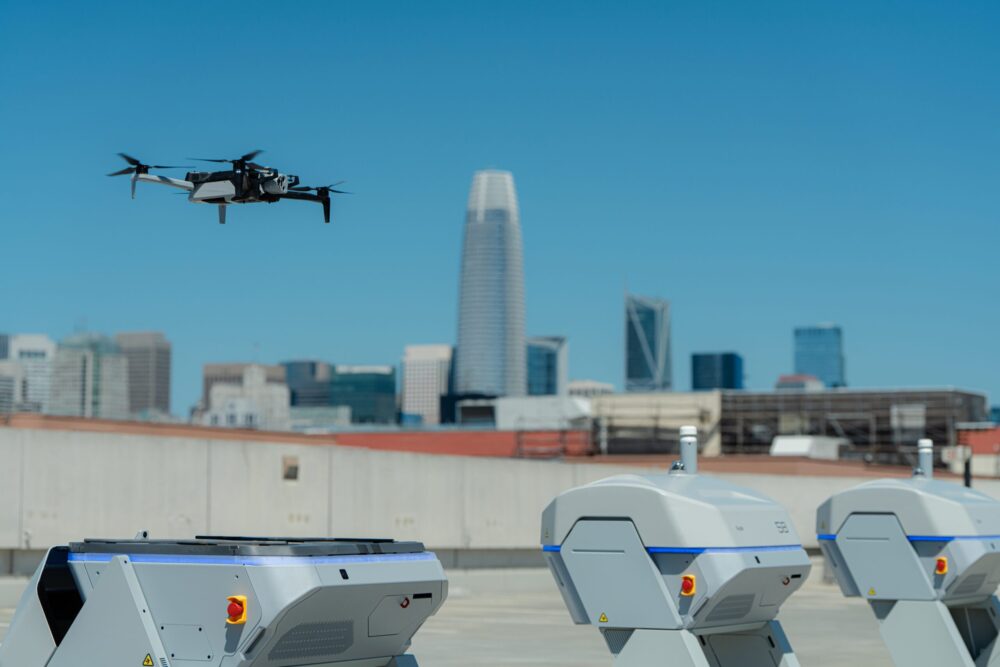Overcoming Connectivity Challenges in Urban Drone as First Responder Programs
Picture this scenario: an urgent call disrupts the heart of a bustling city. Sirens pierce the air, but above the din, a drone quietly zips to the scene, beaming a live feed to nearby responders. Suddenly, the feed halts as the drone ventures between towering buildings, encountering the notorious “RF wall.” This invisible barrier is a formidable challenge for urban Drone as First Responder (DFR) initiatives. Overcoming it is vital for enhancing emergency response in urban areas.
Importance of Connectivity for Urban DFR Operations
In densely populated cityscapes, drone connectivity often emerges as the weak link. Concrete, steel, glass, and increasing radio interference conspire to disrupt traditional signals. A break in communication severs the drone’s video and control link, leaving emergency teams blind.
During DFR missions, every delay can risk lives and safety. Reliable communication is not merely beneficial—it’s essential for situational awareness and efficiency.
Urban RF “Black Holes” and Their Real-World Implications
Experts at the recent Drone Thought Leadership Summit highlighted urban connectivity as a major obstacle for DFR. Skyscrapers create shadow zones that impede radio and cellular signals, causing multi-path interference that scrambles drone communications.
When faced with such interruptions, operators lose sight and control over the drone, leading public safety agencies to deploy extra resources or make uninformed decisions, sometimes increasing risks.
Key Technologies Tackling Urban Connectivity Challenges
1. Multi-Network Connectivity: Skydio Connect Fusion
Top drone manufacturers confront RF walls with multi-network switching. This innovation allows drones to switch from direct radio control to cellular data without losing connection.
Skydio’s Connect Fusion enables drones to transition to LTE or 5G when the radio link fails, maintaining communication even in dense urban environments.
Drones are equipped with autonomy features to “hold position” or return if connections drop entirely, providing a lifeline for public safety operations.
2. Tethered Drone Solutions
An alternate approach involves tethering drones to ground stations, ensuring continuous power and a direct digital link. This method prevents RF dead zones and serves as a high “communication mast,” extending networks to the ground crews.
During a Kentucky festival, a tethered DJI drone provided stable video communication, also acting as a Wi-Fi hotspot for emergency responders.
3. BVLOS with Robust Mesh and Cellular Networks
Equipped with Beyond Visual Line of Sight (BVLOS) capabilities, DFR systems utilize mesh and cellular networks, achieving vast operational ranges even when radio fails. This advancement allows remote, automated control across wide areas.
4. Smart Autonomous Fail-Safes
Elite DFR drones possess AI-driven autonomy, enabling them to “hold,” return, or continue operations independently upon signal loss. They boast obstacle avoidance and accurate positioning, critical in complex urban environments.
The Human Factor: Training and Workflow Integration
Beyond technology, success hinges on expert training and smart integration.
- Scenario-based drills aid operators in adapting to changing urban environments.
- Streamlined equipment with browser-based control ensures simplicity and scalability.
- Providers offer maintenance and real-time support as standard.
Real-World Impact: Case Studies
Fire Response above the City Skyline
A Skydio drone expedited assessment of a nighttime high-rise fire, streaming infrared footage to guide critical decisions, despite severe signal obstructions.
Urban Disaster Response: Ad hoc Communication Networks
In severe flooding, tethered drones relayed video and Wi-Fi across district boundaries when local cell towers failed, speeding coordination among rescue units.
Police Surveillance during Citywide Protests
During protests, police drones utilized mesh networks to maintain connectivity, countering network jamming attempts and preserving situational awareness.
Ongoing Challenges
Despite advances, key issues remain: data security, network congestion, regulatory restrictions, and extreme weather disruptions. Ongoing efforts address these challenges through collaborations and innovative solutions.
Future Trends and Breakthrough Innovations
- mmWave and 6G Networking: Emerging high-bandwidth standards offer potential for future urban drone fleets.
- Edge AI Collaboration: Drones perform incident analysis onboard, reducing reliance on continuous data links.
- Regulatory Evolution: As urban DFR solutions establish safety, expedited mission approvals become increasingly likely.
- Persistent DFR Networks: Agencies deploy rooftop drones for rapid, citywide emergency response day or night.
Expert Tips for Resilient Urban DFR Implementations
- Assess city RF maps to identify connectivity gaps.
- Invest in multi-network drones for seamless connectivity.
- Train crews for redundancy, ensuring preparedness in case of connection loss.
- Utilize tethered platforms for extended coverage during major events.
- Collaborate with local telecoms to secure emergency bandwidth on public networks.
- Foster community trust with educational sessions on drone applications.
The Human Touch: Inspirational Stories
Our team has bolstered DFR programs across cities. In one instance, engineers adapted drone streaming in real-time, aiding firefighters to prevent a disaster and reinforcing the impactful human side of technology.
Conclusion: Urban Connectivity as the Backbone of Emergency Response
Overcoming connectivity issues is not about extending range but ensuring every bit of data optimizes life-saving missions. With cutting-edge multi-network drones and integrated platforms, DFR teams can finally surpass connectivity barriers, leveraging aerial insights for widespread safety and resilience.
Our experts stand ready to help you assess, design, and deploy robust drone networks for any city’s safety needs.











